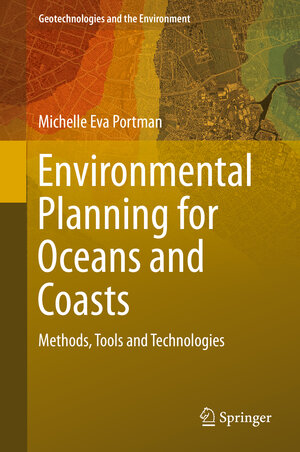
“This book can and should be used as a tool by planners, policy makers, and others to stop or even reverse the human-led detrimental process of ocean and coastal pollution and degradation. The book’s largest contribution lies in the fact that unlike other scientific literature on the subject, it specifically focuses on planning and provides planners (and others) the tools to make a change in an area that desperately needs one.” (Yael Teff-Seker, Journal of Planning Education and Research, May 2017)
“Portman (architecture, Technion–Israel Institute of Technology) examines how planning can advance environmental conditions in ocean and coastal areas. … The text includes a generous number of high-quality photographs, figures, and tables. Each chapter contains references, and the work provides a much needed list of abbreviations. The value of the book is its comprehensive treatment of planning needs for ocean and coastal areas. Summing Up: Highly recommended. Upper-division undergraduates through researchers and faculty; professionals.” (J. B. Huffman, Choice, Vol. 54 (4), December, 2016)
Environmental Planning for Oceans and Coasts
Methods, Tools, and Technologies
von Michelle Eva PortmanThis book informs environmental planning professionals, students and those interested in oceans and coasts from an environmental perspective about what is needed for planning and management of these unique environments. It is comprised of twelve chapters organized in three parts. Part I highlights the basics tenets of environmental planning for oceans and coasts including important concepts from the general field of planning and coastal and ocean management (e. g., hydrography, oceans policy and law, geomorphology). Environmental problems inherent within oceans and coasts (such as sea level rise, marine pollution, overdevelopment, etc.) are also addressed, especially those at the land–sea interface. Part II covers those methodological approaches regularly used by planners working to improve environmental quality and conditions of oceans and coasts among them: integrated planning and management, ecosystem services, pollution prevention, and marine spatial planning. Part III focuses specifically on state-of-the-art tools and technologies employed by planners for marine and coastal protection. These include systematic conservation planning for protected areas, decision support tools, coastal adaptation techniques and various types of communication, including visualization, narration and tools for stakeholder participation. The final chapter in the book reviews the most important concepts covered throughout book and emphasizes the important role that environmental planners have to play in the protection and well-being of oceans and coasts. Michael K. Orbach, of the Nicholas School of the Environment at Duke University, penned the book's foreword.




